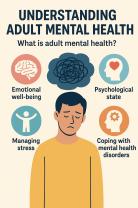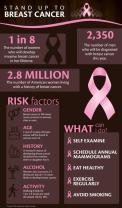What facts should you know about opioid dependence?
Opioid dependence is a serious medical condition characterized by a physical and psychological reliance on opioids. Here are key facts you should know about opioid dependence:
Definition:
- Opioid dependence refers to a chronic medical condition where an individual becomes physically and psychologically dependent on opioids.
Opioids and Examples:
- Opioids are a class of drugs that include both prescription pain relievers (oxycodone, hydrocodone, morphine, etc.) and illicit substances like heroin.
Physical Dependence:
- Continued use of opioids can lead to physical dependence, where the body adapts to the presence of the drug, and withdrawal symptoms occur when use is reduced or stopped.
Psychological Dependence:
- Opioid dependence is not only physical but also involves a psychological reliance on the effects of the drug, often leading to cravings and compulsive drug-seeking behavior.
Tolerance:
- Over time, individuals may develop tolerance, requiring higher doses of opioids to achieve the same effects. This can contribute to the risk of overdose.
Withdrawal Symptoms:
- Withdrawal symptoms can be intense and may include nausea, vomiting, diarrhea, anxiety, muscle pain, and insomnia. These symptoms can make it challenging for individuals to quit using opioids.
Risk Factors:
- Factors contributing to opioid dependence include genetics, mental health conditions, a history of substance abuse, and exposure to opioids for pain management.
Prescription Opioids:
- Opioid dependence can develop even when prescription opioids are taken as directed by a healthcare professional. It is essential for patients and healthcare providers to be vigilant about the potential risks.
Heroin Use:
- Opioid dependence can also result from the use of illicit opioids like heroin, which has a high potential for abuse and addiction.
Treatment Options:
- Treatment for opioid dependence often involves a combination of medication-assisted treatment (MAT), counseling, and support services. Medications such as methadone, buprenorphine, and naltrexone may be prescribed.
Stigma and Barriers:
- Stigma surrounding opioid dependence can be a significant barrier to seeking help and receiving adequate treatment. Education and awareness are crucial in addressing this issue.
Overdose Risk:
- Opioid dependence increases the risk of overdose, especially if individuals misuse opioids or combine them with other substances.
Public Health Crisis:
- Opioid dependence and the opioid epidemic have become major public health concerns globally, leading to numerous overdose deaths and societal challenges.
Prevention and Education:
- Prevention efforts focus on responsible prescribing practices, public education on the risks of opioid use, and increasing access to addiction treatment services.
If you or someone you know is struggling with opioid dependence, seeking help from healthcare professionals and support organizations is crucial. Early intervention and appropriate treatment can significantly improve outcomes for individuals dealing with opioid dependence.
Opioid Dependence: Facts, Differences, and Treatment
1. Important facts about opioid dependence:
- Definition: Opioid dependence is a physical and psychological condition characterized by the body's adaptation to repeated use of opioids. This leads to withdrawal symptoms if the drug is stopped or reduced abruptly.
- Risks: Dependence increases the risk of overdose, serious health complications, and impaired daily functioning.
- Causes: Can develop from prescribed pain medication use, illicit drug use, or both.
- Symptoms: Include cravings, anxiety, restlessness, muscle aches, nausea, vomiting, and diarrhea upon stopping or reducing opioid use.
- Prevalence: Millions of people globally struggle with opioid dependence.
2. Difference between dependence and addiction:
- Dependence: Physical adaptation characterized by withdrawal symptoms. Can occur without intentional misuse or compulsive drug-seeking behavior.
- Addiction: A chronic brain disease characterized by both dependence and uncontrollable drug-seeking behavior despite negative consequences. Not everyone with dependence develops addiction.
3. Effective treatments for opioid dependence:
- Medications: Methadone, buprenorphine, and naltrexone help reduce cravings and withdrawal symptoms, allowing individuals to focus on recovery.
- Behavioral therapy: Individual and group therapy address underlying issues, coping mechanisms, and relapse prevention strategies.
- Support groups: Connect individuals with others in recovery for peer support and shared experiences.
- Comprehensive treatment plans: Combine medication, therapy, and support groups for the best chance of long-term recovery.
Additional facts:
- Early intervention is crucial for successful treatment and improved outcomes.
- Stigma surrounding opioid dependence can hinder individuals from seeking help.
- Treatment is effective, and many people achieve long-term recovery with the right support.
Resources:
- National Institute on Drug Abuse: https://www.drugabuse.gov/publications/drugfacts/prescription-opioids
- Substance Abuse and Mental Health Services Administration:
- National Council on Alcoholism and Drug Dependence: https://ncadd.org/
Remember, seeking help is a sign of strength, not weakness. If you or someone you know struggles with opioid dependence, there are resources and support available to guide you on the path to recovery.













